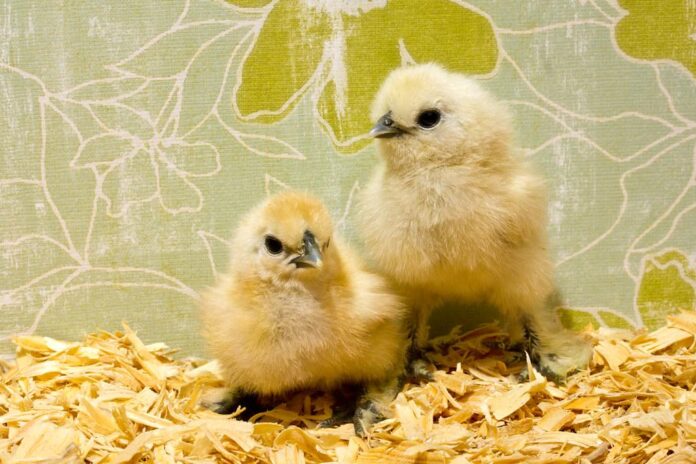
The Fascinating World of Hatchery Chickens: From Egg to Coop
Raising chickens in a backyard coop has become a popular hobby for many people. It’s a rewarding experience to watch the entire life cycle of a chicken unfold, from egg to coop. Whether you’re a beginner or seasoned chicken keeper, there’s always something new to learn about the fascinating world of hatchery chickens.
In this article, we will explore the process of raising hatchery chickens and provide tips and advice for anyone interested in starting their own backyard flock.
Choosing the Right Breed
Before embarking on your chicken-keeping journey, it’s important to consider which breed of chicken is best suited for your needs. Some breeds are excellent egg layers, while others are prized for their meat. Additionally, certain breeds are known for their docile nature, making them great pets for families with young children.
Popular egg-laying breeds include the Rhode Island Red, Leghorn, and Australorp, while the Cornish Cross and Freedom Rangers are commonly chosen for their meat production. For those seeking friendly and docile chickens, the Silkies and Orpingtons are highly recommended.
Once you’ve determined the type of chicken that best fits your requirements, it’s time to consider where to source your flock. There are several options available, including hatcheries, local breeders, and farm supply stores. Hatcheries are a popular choice for obtaining day-old chicks as they offer a wide variety of breeds and can ship chicks directly to your doorstep.
The Hatching Process
Raising hatchery chickens begins with the hatching process. If you have broody hens, you can choose to allow them to hatch their own chicks, but for those without a broody hen, purchasing day-old chicks from a hatchery is the most common method.
The hatching process typically takes 21 days, but certain breeds may have a shorter or longer incubation period. Once the chicks have hatched, they will require a warm and secure environment to thrive. A brooder, equipped with a heat lamp, bedding, and a steady supply of food and water, is essential for the first several weeks of the chicks’ lives.
As the chicks grow, they will require more space to move around and explore. It’s important to gradually introduce them to the outdoors once they have developed feathers and are better equipped to regulate their body temperature.
Feeding and Care
The health and well-being of hatchery chickens depend on proper nutrition and care. It’s essential to provide a balanced diet that meets the nutritional requirements of growing chickens. A commercial chick starter feed is ideal for young chicks, as it contains the necessary vitamins and minerals essential for healthy growth.
In addition to a proper diet, it’s important to ensure that the chickens have access to fresh water at all times. Water is essential for their overall health and plays a crucial role in maintaining body temperature, digestion, and egg production in hens.
Regular health checks are also vital to identifying and addressing any potential issues early on. Monitoring for signs of illness, maintaining a clean and sanitary coop, and practicing good biosecurity measures can help prevent common ailments and diseases in chickens.
Transitioning to the Coop
As the chicks mature, they will eventually outgrow the brooder and will need to be transitioned to a coop. A coop provides chickens with a safe and sheltered environment while allowing them the freedom to roam and forage during the day.
When designing or selecting a coop, it’s important to consider several factors, including size, ventilation, and predator protection. A well-ventilated coop with ample space for the flock to move around is essential for their health and well-being. Additionally, sturdy construction and predator-proofing measures are crucial to safeguard the chickens from potential threats.
Providing adequate roosting space and nesting boxes in the coop is also essential for the chickens’ comfort and egg-laying behavior. Roosts allow chickens to perch during the night, while nesting boxes provide a secluded area for hens to lay their eggs.
Egg Production and Beyond
Once your chickens have settled into their coop, they will soon start laying eggs. The frequency and size of the eggs will depend on the breed and age of the hens. With proper care and nutrition, hens can lay eggs consistently throughout their productive years.
In addition to egg production, chickens also provide natural pest control by foraging for insects and pests in the yard. Their manure can be composted and used to fertilize gardens, and their feathers can be used for crafting and insulation.
For those interested in raising chickens for meat, the process involves raising broilers for a set period before processing them for meat. This requires a separate housing setup, feeding program, and processing plan.
Conclusion
Raising hatchery chickens from egg to coop is a truly rewarding experience. Whether you’re interested in the practical benefits of fresh eggs and pest control or simply enjoy the companionship of these feathered friends, there’s something special about having a backyard flock.
Through proper nutrition, care, and housing, your hatchery chickens will thrive and provide you with years of enjoyment and productivity. By understanding the basics of chicken keeping and staying informed about best practices, you can create a safe and healthy environment for your chickens to thrive. Whether you’re a beginner or seasoned chicken keeper, the fascinating world of hatchery chickens offers something for everyone to enjoy.


















